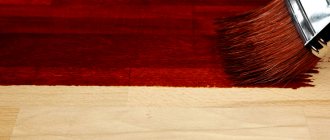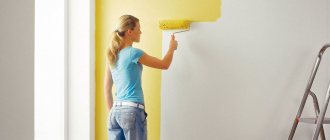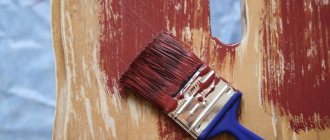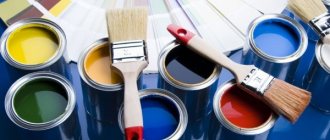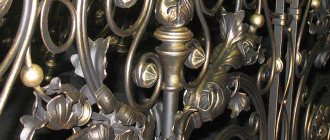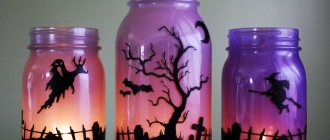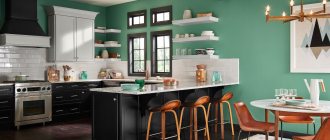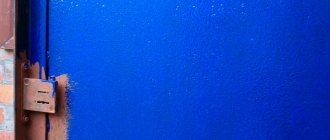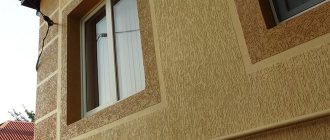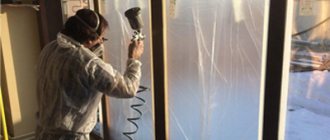Updated: 03/06/2021 13:12:24
Expert: Andrey Nikolaevich Kuznetsov
*Review of the best according to the editors of expertology.ru. About the selection criteria. This material is subjective in nature, does not constitute advertising and does not serve as a purchase guide. Before purchasing, consultation with a specialist is required.
The most affordable floor finishing option is to paint the surface. For this purpose, water-based, oil-based, acrylic and latex compositions are used. Paint the floor in an apartment or house with a roller, brush or spray. This protects the flooring materials from moisture and drying out, and also makes the surface attractive. We have prepared a rating of the best floor paints, which is compiled taking into account the characteristics of the products and customer reviews. After considering the material, you will be able to make the right choice for repair.
What can you paint with?
To choose the right paint coating, you should consider 3 important nuances:
- Wear resistance. The floor, unlike walls and, especially, the ceiling, is constantly exposed to stress: people walk on it with bare or shod feet, move furniture, rub with brushes and floor mops. In order for painted logs to retain their appearance for a long time, you should choose durable, reliable paints and varnishes intended for this type of operation.
- Scope of application. The floor surface itself is a problem area in any interior, and if you have to paint a wooden floor in an unheated or, especially, open room, the situation is aggravated by temperature changes and natural phenomena such as scorching sun or rain, snow, hail. The material must be as stable as possible.
- Design. If your style or personal preferences require preserving the natural texture of the wood, you can simply apply a clear varnish - matte, satin or gloss - to the sanded floor. Another option is wax or oil, but it is best to use them as a coating for wooden floors in heated spaces - houses, apartments. In other cases, use paint for a wooden floor - dark, light, colored.
Varnish
Alkyd, acrylic, and polymer compositions are suitable for covering a wooden base. Oil and essential varnishes are not used in finishing work; they are considered furniture varnishes.
The main advantage of varnishes is that they do not hide the texture, forming a dense transparent film. Even if the foundation is tinted, it will still only highlight the appearance and not hide it. Unfortunately, the varnish layer has not only advantages, but also defects: cracks, chips. To completely hide them, puttying is required, and then coating with opaque paint.
The photo shows a floor covered with glossy varnish
Wax, oil
Liquid oil and hard wax, unlike varnish or paint, do not create a noticeable film, but only block the pores of the wood. Due to this, the texture is emphasized and a waterproof barrier appears. The main disadvantage of this coating is its fragility. Oil should be renewed every year, wax - once every 2-3 years. For comparison, the varnish surface will “stand” for 10-15 years.
The photo shows oil applied to wood.
Paints, enamels
Features by type of premises
Floor preparation, choice of composition, application nuances depend on where exactly the wooden floor is to be painted.
Open room
Unglazed balconies, open verandas, gazebos without walls are painted exclusively with external (street) paints and varnishes. Choose frost-resistant paints that do not fade in the sun or peel off in the rain.
The photo shows the painting of the flooring on the open veranda
Closed unheated room
In country houses, summer outbuildings, and closed gazebos, it is important that the floor can withstand not only foot traffic, but also temperature changes and high humidity. Universal compositions are suitable, but it is better to choose enamel for exterior use.
Advice! Varnish is not the best choice for cold wood floors because... even frost-resistant varnishes are less durable than the same paints.
Closed heated
The easiest way to paint wooden floors in a house or apartment. Any paint marked “For interior use” is suitable for use. They cost less because they do not contain additional strengtheners and additives. Choose odorless paints or varnishes, wax or oil.
Useful tips
If you are laying down new boards, choose hardwood. The soft ones will quickly wear out and peculiar bedsores will form on such a floor. Hard varieties are more expensive, but they can be called stronger and more durable. If you want to give the wood a special texture, use a stain before applying oil.
When choosing what color to paint the floor on the veranda, pay attention to the color of the stairs and railings near the house. If you have already put together the entire image of the veranda in your head, you can choose a shade to match the color of the furniture. We advise you to choose calm and not flashy colors that will help you relax and enjoy nature.
To prevent the boards from deteriorating due to temperature changes, cover them with thick polyethylene when winter comes. And to avoid slipping and injuries during rain, lay rubber mats with holes.
Put special silicone caps on the legs of furniture that you place on the veranda or glue felt pads. This measure will prevent scratches.
What tools will you need?
Painting a floor is not much different from any other painting job, but the set of tools and necessary things is a little wider.
- Ditch, roller, brush. The roller, which is convenient to squeeze out in the tray, provides quick beauty over a large area. It’s more convenient to use a brush to carefully paint the joints behind the walls and go around the pipes.
- Masking tape. Paper tape will help protect walls, pipes and other elements that should not be painted.
- Wood putty, spatula. For smoothing out irregularities, sealing cracks and seams.
- Chisel. It has the opposite effect of putty - it helps to remove unnecessary protrusions.
- Primer. Used as a preliminary layer, improves adhesion, creates additional protection for wood.
- Solvent. It will help clean your brush and hands after work and remove random stains.
You may also need:
- Construction hairdryer. Effectively removes complex old coatings such as oil paint, even if the number of layers is more than 1-2.
- Grinding or scraping machine. For restoration of parquet before varnishing or waxing.
Recommendations for preparation
The final quality of work depends more than 50% on the preparatory stage. First of all, remove from the room everything that could interfere with painting (furniture, equipment). Clear the perimeter of the floor from baseboards.
A wooden floor treated with paint or varnish that has already begun to peel must be restored to its original condition - this is the only way that subsequent fresh layers will lie evenly on it. This can be done using heating (hair dryer), grinding, chemicals (special removers).
If the coating holds tightly, it is enough to sand the floor to a satisfactory condition and you can proceed to further actions.
- Masking large irregularities. If there are wide gaps between the lags, planks cut to width are tightly inserted into them. After the “patch” has taken its place, it is planed and sanded flush with the floor.
- Leveling out minor flaws. Armed with wood putty and a spatula (it’s better to have two on hand: a soft rubber one and a hard metal one), cover cracks, chips and other defects. Let the putty dry and sand with fine sandpaper.
- Protection before painting. Priming is an important step for wood. It is necessary not so much for better adhesion, but for additional protection. The primer penetrates deeply into the wood fibers, providing a barrier against pests, fire, fungus, and destruction.
How to paint yourself?
Painting a wood floor is no more difficult (and maybe easier!) than any other surface. The main thing is to follow simple step-by-step instructions:
- Cover all areas that need to be protected from pigment with paper tape. Including walls adjacent to floor boards.
- Open a can of paint and stir the contents well to evenly distribute the fillers. Pour some into a cuvette.
- Use a small thin roller or a suitable brush to outline the room along the walls.
- Use a large roller to paint the entire floor area, moving from the far corner to the exit. Leave until completely dry.
- Apply a second coat of paint, repeating steps 3 and 4.
Important! If you plan to install floor skirting boards to be painted in the color of the floor, they are installed immediately after the preparatory work and painted simultaneously with the boards.
After completing all work, give the paint at least 24 hours - during this time the coating will become harder and will not be scratched if accidentally hit by furniture.
Advice! Before moving furniture in, check the quality of the floor paint: if, when the boards have dried, the material has run off a little and bald spots have formed, it is better to cover them up right away.
To make sure that anyone can handle painting and not miss a single stage of the work, watch the video:
Preparatory work before painting the floor
To obtain a high-quality painted coating, all actions must be performed in accordance with the technology. At the first stage, you should clean the surface to be painted and select the appropriate paint. It is best to pay attention to high-quality and time-tested mixtures, especially if a concrete or cement base will be opened.
Work must be carried out at an optimal level of humidity and at normal air temperatures. Specific information on this matter is indicated on the paint container, which must be read before use.
Additionally, it is advisable to check the humidity of the surface being treated. To do this, you will need a small amount of plastic tape, which should be glued and left on the floor for about a day. The result will be one of the following:
- If condensation forms on the outside of the tape, you will need to reduce the air humidity. To perform this task, you can use special dehumidifiers.
- The presence of condensation on the inside of the plastic indicates an excessive amount of moisture in the concrete itself. To eliminate this drawback, you should install one or more heaters in the room and place a bag of salt, which will absorb excess moisture.
- Another reason for the increase in the level of moisture in the room may be a malfunction of the heating system due to its failure, so repair work will be required or the pipes and gutters of the water supply system will need to be cleaned.
The temperature range from 5 to 33°C is considered the standard for painting work, but in addition, you should familiarize yourself with the indicators indicated on the container with the composition used in order to prevent the possibility of possible errors during application.
Before you start painting the coating, it is necessary to thoroughly clean it from various contaminants, dust and other debris, but before that you need to remove the furniture and equipment present in the room that are in it. After this, you should thoroughly vacuum the entire surface, removing all existing dirt.
If necessary, a degreasing agent can be used to remove remaining contaminants.
Note! A sanding machine is mainly used to remove old paint. Removing the paint layer can also be done manually using regular sandpaper, but in this case the work will take an order of magnitude longer.
Next, you should wash the floor, which will require a brush, detergent and running water. Any uncleaned dirt can cause a significant deterioration in the adhesion of paint to the surface. After this, you need to wait until the coating dries completely.
All cracks and other damage present on the floor surface must also be repaired. For this purpose you will need a spatula, putty or other mixtures that can be purchased at any hardware store. Not all applied products require sanding after drying, so you should read their instructions.
Before painting the floor, you still need to remove the baseboards, if there are any in the room, or seal them with adhesive masking tape. The first option is more reliable, however, the second is much faster and simpler.
Features of applying varnish
On the one hand, it may seem that varnishing is no different from painting. But in reality the processes differ markedly from each other.
Firstly, if it is better to take a roller for paint, then for varnish it is better to use a soft, wide brush. Secondly, it is important to varnish at a temperature of 15-25 degrees above zero.
Let's get started:
- Carefully move the polish around inside the can. If you plan to use a brush, you don’t have to pour the contents into the tray.
- Apply the first coat along the grain of the wood, carefully going through each joist and spreading the varnish thinly. Leave until completely dry (time indicated on the package).
- After the first layer, you may notice that the fibers have risen a little - take a block, fine sandpaper and go over the entire floor area to remove unevenness.
- Carefully remove any accumulated dust using a vacuum cleaner and a clean cloth. It is recommended to wash a smooth polished floor 2-3 times.
- Apply a second coat of varnish.
- Sand and wash the floor again.
- Apply a third coat of varnish. It is essential for pine floors. Hardwood can only be coated twice.
Important! The finishing coating is not sanded: to remove the sticky layer, it is enough to wash the floor after drying with a soap solution.
Detailed video instructions will help you put everything in its place:
Compatibility of paints and varnishes
If the floor is not painted for the first time, then its compatibility with other types of paints will be the main factor when choosing a new material. Thus, acrylic compositions can be used on most types of coatings, alkyd can be used on oil-based coating compositions, polyurethane can only be applied to the same type of paint. Manufacturers write information on the packaging if there are particularities of coating application. Therefore, studying this information will be rational.
If the floor is not painted for the first time, then its compatibility with other types of paints will be the main factor when choosing a new material.
Original painting ideas
The easiest way to make a monochromatic floor covering is to simply paint it one color around the entire perimeter. But if you want something more original, you can arm yourself with patience and create a unique pattern.
For example, alternating white and wooden diamonds: simple, fast, impressive. First of all, paint some of the squares white, then cover the entire area with a couple of layers of varnish.
The photo shows an unusual way of painting the floor
Geometric 3D painting looks no less original - to implement it you don’t even need to have artistic talent, you just need to figure out where and what shade to apply.
Are you afraid of making a mistake when modeling manually? Use stencils! You can purchase ready-made ones or order them from a printing house to suit your taste.
One last idea - add some color! The technique of multi-colored staining looks best on small-format floors, such as parquet. The only negative is that you will have to tint many shades to get a spectacular result.
Floor paint is a budget-friendly, but nonetheless workable option for finishing boards. By choosing the right composition and following all the recommendations, you will create a durable floor covering with your own hands.
Rating of the best floor paints and what key points you need to pay attention to when choosing
Despite the modern abundance of materials for finishing floors, painting is still one of the most common methods of finishing them. And, apparently, he is not going to give up his leading place.
Rating of the best floor paints
Chief editor of the Stroyday.ru project. Engineer.
But floor paint should play not only a decorative role - it also effectively protects the surface from many negative influences. Therefore, it is extremely important to choose the optimal composition correctly. The reader can be helped in this matter by the proposed rating of the best floor paints.
